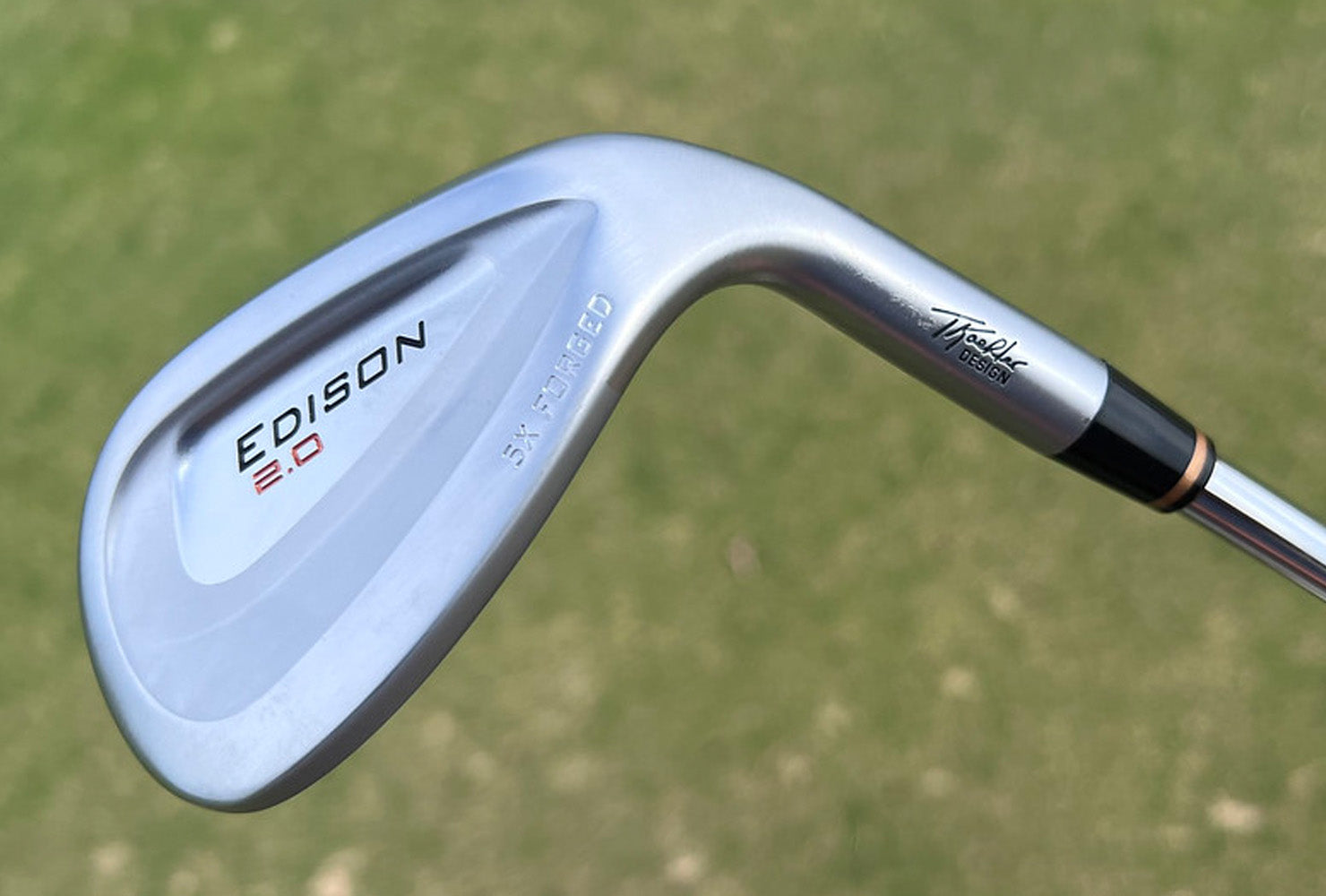With the recent introduction of the "new" Titleist Vokey SM10 line of wedges, we are getting a lot of inquiries about how the EDISON 2.0 wedges differ from Titleist's newest offering. Let me start by making it perfectly clear that the main difference lies with the golfers each have been engineered for – the Vokey SM10 for tour professionals versus the EDISON 2.0 for everyday recreational golfers who do not possess those elite skills.
For two decades or longer, the Titleist Vokey wedges have been #1 on the professional tours, and the best-selling wedges in the marketplace. I give high marks to Titleist for achieving both those goals, of course. Bob Vokey and his team are masters at working with the extraordinary skills of the game's elite players, fine-tuning every nuance of a wedge to suit any tour professional's personal preferences.
But the challenges of everyday recreational golfers -- even the most skilled of you -- are miles apart from the wants and needs of the relative handful of the game's elite players.
In my 30+ years of studying golfers and their wedges, I've analyzed over 60,000 wedgefitting profiles of regular golfers and have had countless one-on-one conversations . . . and they continuously reveal the same challenges –
- “I hit my wedges too high”
- “My distance control is not consistent”
- “I don't get the spin I'd like”.
These are not the problems the tour players have!
Titleist's own "marketing-speak" about the "new" Vokey SM10 wedges reveals two major nuances that the SM10 addresses:
First, they say that performance is optimized when impact is made between the 2nd and 5th grooves. This is where tour players wear out a dime-sized area on the face of their wedges, but it is not at all like the wear pattern everyday golfers’ wedges exhibit. That’s why even your best wedge shots do not fly like the tour players’ average shots, and your distance and spin loss on your slight misses – less than ½” – cost you dearly in both distance and spin,
Secondly, in the lower lofts, Titleist claims to have moved the CG ½ of a millimeter to reduce the tendency get too much draw on full swing wedge shots. Let me address two things about that point:
- One half of a millimeter is the thickness of four to seven human hairs. In contrast, the EDISON 2.0 wedges position the CG nearly forty full millimeters higher than any ‘tour design’ wedges, so they put up to 42% more mass directly behind and above your best shots. That’s the key to their unmatched forgiveness.
- While reducing a draw bias may be what the tour players wanted, in my 30+ years talking wedges with golfers of all skill levels, I have never once heard a recreational golfer say they get too much draw on their wedge shots.
The fact that many of the Titleist paid staff tour players immediately put the SM10 wedges into play proves that the actual launch conditions – trajectory, distance and spin – did not measurably vary from the SM9 or SM8 wedges they had been playing. Tour players cannot afford their wedge performance to change much, because they have invested countless hours honing their extraordinary greenside touch and scoring skills. A significant change could negate all that practice and require many more hours than they have to spare.
To illustrate that point about wedges not changing, I’ll close this article with a revealing study of the lack of wedge design evolution over the past 25+ years. The next five images are the Original Vokey 200 from 1999, the Vokey "BV" from 2007, The Vokey SM4 from 2012, the Vokey SM10 just introduced . . . and for perspective, the original Cleveland 588, from 1988. You can see that significant change is NOT in the Titleist playbook, but it also isn’t in any wedge company’s playbook . . . except EDISON Golf.





Bear in mind that when the Cleveland 588 wedge was introduced in 1988, a majority of golfers were playing persimmon drivers and simple forged blade irons . . . and there were no such things as hybrids . . . a far cry from what we see in those categories today.

And just for fun and to further illustrate this "stagnation" in the wedge category, these are two wedges that Ben Hogan personally delivered to Jack Fleck at the 1955 U.S. Open, which Fleck went on to win, denying Ben Hogan his record fifth U.S. Open title. They indisputably prove the wedge category is the technological ‘stepchild” of the golf equipment industry. But it’s certainly not because they achieved perfection way back then.
The simple fact of golf club design is this – if you don’t change the way it looks, you cannot change the way it performs.



Leave a comment